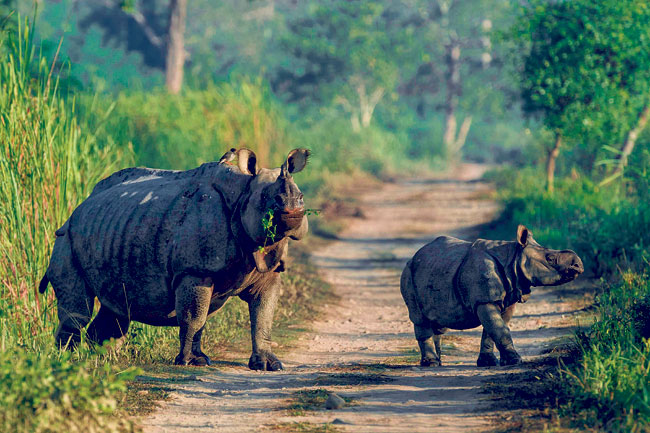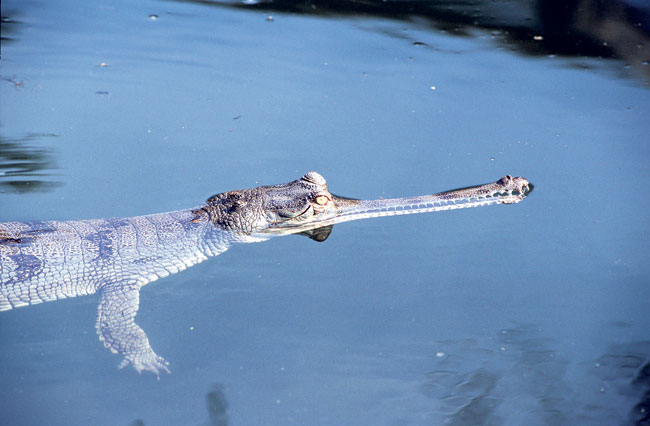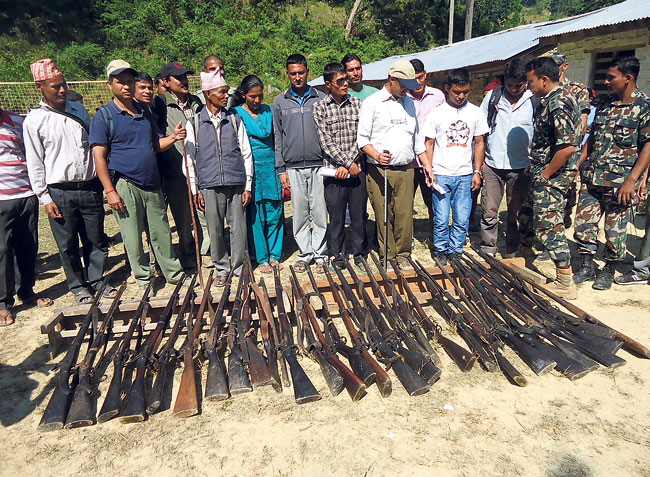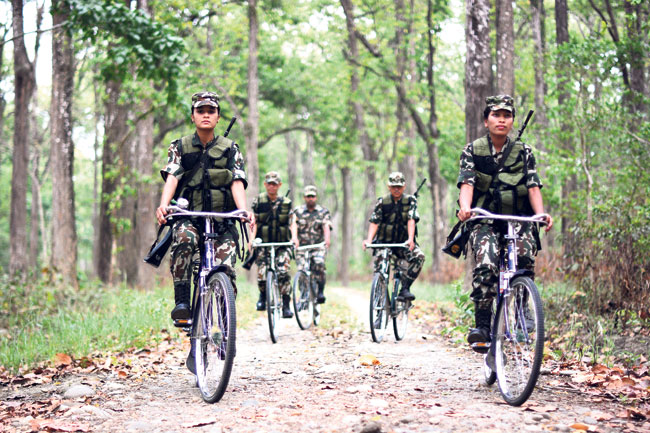On September 23, 2006, 20 conservation heroes and four crew members lost their lives in a tragic helicopter accident in Kangchenjunga while etching a major conservation landmark – the handover of Kangchenjunga Conservation Area to the local communities by the government as Nepal’s first community-managed conservation area.
What was left was a void, a loss of an era, of conservation thinkers and doers. And yet, all was not lost. Their legacy lived on, serving as an inspiration for Nepal to build on the foundations of conservation impact that could withstand the test of time. On this day, 23 September 2016, which marks the 10 year death anniversary, WWF Nepal is launching a photo book titled “Legacy of Leaders” as a tribute to the conservation heroes.
This book that will be launched by the President Bidhya Devi Bhandari will also be a celebration of the inspired conservation besides looking back at a decade of successes and change. Here, The Week gives you a sneak peek inside the pages of this celebratory book.
The lesser panda
Lawmakers remember Jo Cox as markets sense rising EU support


Nepal is presently home to an estimate 1.9% (approximately 237 -1061 individuals) of the total global red panda population of less than 10,000 mature individuals. Nepal’s Langtang National Park hosts 24.33% of the country’s total red panda population. Mountain communities are at the forefront of the protection of this species with significant interventions in anti-poaching measures and habitat management.
A community-based red panda monitoring mechanism was established in Langtang National Park in 2013 as an effort to draw attention to the conservation problems confronting this endangered species. This mechanism capacitated community-based organizations and local people in endangered red panda conservation through red panda monitoring thereby creating local stewardship in the conservation efforts for this species.
Back to the future

The population of one-horned rhinoceros in Nepal increased by 48% between 2008 and 2015. The present rhino population stands at 645 – the highest number recorded in Nepal till date. This is an important feat in rhino conservation in a country that lost 37 rhinos to poaching in a single year.
Nepal has a government-backed Rhino Conservation Action Plan in place to safeguard the rhino. This has a number of aspects – translocations, anti-poaching measures, and broader community development and habitat protection – which are being supported by a range of partners and stakeholders including WWF Nepal.
Rhino translocations resumed in Nepal after 13 years in 2016 with five rhinos successfully moved from Chitwan National Park to Bardia National Park as part of a broader expedition to translocate 30 rhinos in total so as to create a second viable population of rhinos in the western complex of TAL to bring back rhino numbers to its historic level of 800+.
The living dinosaur

The 2013 gharial census showed a 53% growth in gharial crocodile population in Nepal compared to the estimate of 2008. As per this estimate, Nepal has 124 gharials compared to the 2008 estimate of 81 gharials. In 2009, 14 gharials fitted with radio tags were released into the Rapti River by the Department of National Parks and Wildlife Conservation in collaboration with WWF Nepal, to track the movement of this critically endangered species. The tracking helped assess the reptile’s survival rate and the status of its preferred habitat in Nepal. The government of Nepal has dedicated ex-situ and in-situ programs in place to safeguard the future of this critically endangered species.
The zero poaching standard

On May 2, 2016, for the first time in the country’s history, Nepal marked two consecutive years since the last one-horned rhinoceros was poached on 2 May 2014 thanks to the coordinated efforts of the government, enforcement agencies including park authorities, Nepal Army and Nepal Police, conservation partners such as WWF Nepal and local communities. This also marked the fourth time since 2011 that Nepal achieved 365 days of zero poaching of rhinos.
Pursuing its zero poaching agenda, Nepal also hosted its first symposium, Toward Zero Poaching in Asia, in February 2015, with representatives from more than 13 Asian countries attending the event and a wider consensus built on the adoption of a Zero Poaching Toolkit to guide a country’s anti-poaching operations. At the same platform, Chitwan National Park was accredited as a Conservation Assured Tiger Standard (CA|TS) approved site, demonstrating its excellence in tiger conservation and protection.
CA|TS was developed by the Global Tiger Forum, WWF, IUCN and WCPA and consists of 17 standards by which all tiger sites can be managed and measured. Chitwan National Park has also been included in the IUCN Green List of Protected Areas which aims to recognize successful conservation endeavors by providing benchmark standards for equitable governance and effective management of protected areas.
Controlling illegal wildlife trade

Nepal is known as a transit point for illegal wildlife trade. In a bid to tighten grips on the trade, the Nepal Police through a historic move, established a separate pillar focusing solely on environmental crimes. Given the significant commitment of the Nepal Police, the results have been profound. Between 2008 and 2016, more than 1,700 wildlife poachers were arrested together with seizures of 38 tiger skins, more than 200kg of tiger bones, 20 rhino horns, and 365 locally made guns.
Additional achievements were the arrest of Raj Kumar Praja, an infamous rhino poacher who is believed to have killed more than 22 rhinos, and the imprisonment of the first complete chain of criminals involved in trading and poaching of one-horned rhinos. Furthermore, in January 2013, the Central Investigation Bureau successfully confiscated the largest amount, in both size and monetary value, of over 1,500kg of Shahtoosh (wool from the Tibetan Antelope which is listed as a Protected Species under Nepal’s National Parks and Wildlife Conservation Act, 1973.





































